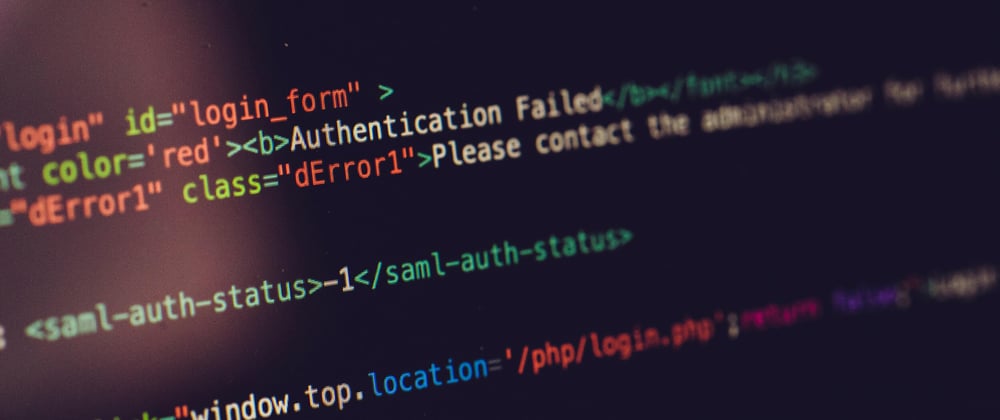Deploying a change that accidentally borks the permissions on your API — by say publicly exposing data that should only be viewable to a subset of users — is going to ruin your week. But figuring out how to properly mock different authentication paths in your tests is hardly trivial, requiring a fair amount of knowledge about how access tokens and authentication providers work. As a result, many test suites rely on a complicated set of user accounts created in Auth0 just for the purpose of testing, a confusing, flaky, and brittle setup. Worse yet are the many test suites that just bypass testing different authentication scenarios altogether.
Sound like an app you know? Then this post is for you. In it, I’m hoping to clarify how authentication providers (specifically Auth0) issue and sign access tokens so that you can mock them in your tests. The examples I’ll provide come from a Django app, but you should be able to reuse the same concepts in any test suite.
A quick primer on access tokens
Access tokens are a mechanism used by authentication providers to let your API know that a request is coming from an authenticated user and what level of access that user should be granted. These tokens are typically JWTs, which means they follow the widely-used JSON Web Tokens standard for transmitting information between two parties in a concise and verifiable way. Although these JWTs can be encrypted, they often aren’t. Instead their usefulness comes from the fact that they are encoded with a verifiable signature of the issuer. They are self-contained in the sense that you don’t have to shoot off a request to the issuer to have them verify the token. You just feed the token through the correct algorithm to find out whether it's properly signed. If so, you can trust that no one besides the issuer tampered with the contents of the token.
To do all of this in the most concise form possible, JWTs follow a very specific structure comprised of three constituent parts separated by dots like this:
{header}.{payload}.{signature}
The header and the payload are JSON objects which are then Base64URL encoded before being added to that structure.1 The header section includes information on what algorithm was used to sign the token and, if applicable, the id of the public key needed to validate it. The payload is where the substance of the token goes. For access tokens, this will be information about the user and what they should be allowed to do. The payload can include really any valid JSON, though there are a few standard fields (or “claims” in the JWT parlance) that are frequently used for most tokens like issuer, expiration time, and audience, among others. Finally, there’s the signature, the JWT’s linchpin. It’s created by taking the first two parts and feeding them through the algorithm indicated in the header.
By default, Auth0 tokens are signed using the RS256 algorithm, which relies on a pair of related public and private keys. When a user of your app logs in with Auth0, she is issued a token that Auth0 signs using a private key. Neither you nor your app will ever see that private key. If you did you would be able to issue JWTs on behalf of Auth0 which would be a very bad day for their security and PR teams indeed. Instead, Auth0 exposes a related public key. This key has just enough information to enable anyone to verify whether a JWT was encoded using its private counterpart, but not enough information to enable them to issue new JWTs. This structure is why RS256 is called an asymmetrical signing algorithm: the parties exchanging the token have different amounts of information, but each has all the information they need to do their business.
There are many different ways of sharing public keys. Auth0 does it via an endpoint that exposes them in a standardized JSON format called JSON Web Keys (JWKs). Here is an example of what that looks like for a random app but your app should have an equivalent endpoint at https://{your-auth0-domain}/.well-known/jwks.json: 2
{
"keys": [
{
"alg": "RS256",
"kty": "RSA",
"use": "sig",
"n": "mff4bkiJV-ve8IY_...",
"e": "AQAB",
"kid": "NzI4MjFDODk5NDBDQ0U4QTAyQTExREFDMEIyRkYzNzBCQjc3QkM3RQ",
"x5t": "NzI4MjFDODk5NDBDQ0U4QTAyQTExREFDMEIyRkYzNzBCQjc3QkM3RQ",
"x5c": [
"MIIDCTCCA..."
]
},
...
]
}
Each object contained in the keys parameter above is a representation of a public key. There's a lot of information in each but the most important properties for our purposes are the n and e parameters, two values derived from the underlying private key. With those two values we can verify that a JWT was signed with the corresponding private key. Also important is the kid property, a string that uniquely identifies the key. As I mentioned above, a token's header can include a unique identifier of the public key needed to validate its signature. We can then use that id to pick the correct key from this set of keys.
How access tokens are used
Now that we know a little about how access tokens are structured and signed, we can begin to understand how they are used by our APIs. The typical flow for a user hitting an endpoint that requires authentication would go something like this:
- A user logs-in with Auth0 and is issued an access token which she can pass to the API with each request.3
- The app decodes the token to get its payload and also the id for the public key it should use to verify the token’s signature (the
kidproperty we discussed above). - The app then requests the issuer’s set of public keys (using an endpoint like the one above), finds the key with the correct
kid, and uses that public key to validate that the token's signature is valid. If it is, it knows that it must in fact have been issued by Auth0. - Knowing that the token is valid, the app can check a few other things that are typically included within the token's payload: are the issuer and audience values (contained within the
issandaudclaims) expected? Has the token expired (a timestamp encoding its expiration date can be contained with theexpclaim)? - If everything still looks good, then the app knows it can trust this token and can finally look to see if the user has permission to do whatever they're trying to do. Typically this is done by checking that expected values are included within the
scopeorpermissionsclaims.
Mocking access tokens
So how can we cut Auth0 out of the permissions process during our tests?
Really, the only places where we need to intervene are the exact same ones where Auth0 intervenes: by issuing the tokens (step 1 above) and exposing the public key needed to verify them (step 3 above). If we do those two things, the app will trust us as the issuer of the tokens and will handle the rest.
Specifically, here’s what we’ll need to do:
- Generate a public/private key pair
- Encode user claims in a token with the private key
- Create a JWK representation of the public key
- Patch the tests to use our mocked token and JWK
To get there we’ll need the help of a couple of Python packages:
- Cryptography: The most widely-used Python package for cryptographic and encryption algorithms. We'll use this to generate our key pair.
- PyJWT: The go-to Python package for encoding and decoding JWTs. We’ll use it to do just that. It will also come in handy to properly encode the public key into its JWK representation.
So install those packages in your environments and let’s take each of the steps above in turn.
Generating a public/private key pair
Generating a key is fairly straight-forward with the cryptography package. Here’s what that looks like:
from cryptography.hazmat.primitives.asymmetric import rsa
def generate_public_private_key_pair():
private_key = rsa.generate_private_key(public_exponent=65537, key_size=2048)
public_key = private_key.public_key()
return (public_key, private_key)
(public_key, private_key) = generate_public_private_key_pair()
If you want to figure out what the exponent and key_size parameters are doing you'll have to delve a bit deeper into RSA keys. For our purposes, suffice it to say that those values are reasonable and commonly-used defaults.
Encoding user claims in a token
Now that we have a key pair, we can encode our user information — including their level of access — in a JWT. For this example, I’m imagining a very simple CRUD app where authenticated users can either have read access, write access, or both and this level of access is communicated through the permissions claim.4
import jwt
ALGORITHM = "RS256"
PUBLIC_KEY_ID = "sample-key-id"
def encode_token(payload):
return jwt.encode(
payload=payload,
key=private_key, # The private key created in the previous step
algorithm=ALGORITHM,
headers={
"kid": PUBLIC_KEY_ID,
},
)
def get_mock_user_claims(permissions):
return {
"sub": "123|auth0",
"iss": "some-issuer", # Should match the issuer your app expects
"aud": "audience", # Should match the audience your app expects
"iat": 0, # Issued a long time ago: 1/1/1970
"exp": 9999999999, # One long-lasting token, expiring 11/20/2286
"permissions": permissions,
}
def get_mock_token(permissions):
return encode_token(
get_mock_user_claims(permissions)
)
def get_mock_read_only_token():
return get_mock_token(permissions=["read"])
def get_mock_read_write_token():
return get_mock_token(permissions=["read", "write"])
I placed the PUBLIC_KEY_ID and ALGORITHM values in constants so that we can reuse them later. The specific value for the public key id is arbitrary but the kid value passed to the JWT header will have to match the kid value of the JWK we will generate in the next step.
Note also that the issuer and audience values (specified in the iss and aud claims) typically need to match those your app expects. You are likely passing these values as configs to to the library your app uses to interact with Auth0, although you may also have implemented this check in your own code.
Creating a JWK representation of your public key
The final piece of data we need is the JWK representation of our public key. Using the cryptography and jwt packages in tandem, we can take care of this fairly handily:
import jwt
from jwt.utils import to_base64url_uint
def get_jwk(public_key):
public_numbers = public_key.public_numbers()
return {
"kid": PUBLIC_KEY_ID, # Public key id constant from previous step
"alg": ALGORITHM, # Algorithm constant from previous step
"kty": "RSA",
"use": "sig",
"n": to_base64url_uint(public_numbers.n).decode("ascii"),
"e": to_base64url_uint(public_numbers.e).decode("ascii"),
}
jwk = get_jwk(public_key)
Patching our tests
The final step is to patch our tests to use the tokens and keys we generated. Here my guidance will necessarily become less broadly applicable because the implementation details will depend on how your app is setup and what frameworks you use. But I will walk you through how I implemented this using pytest in a Django app recently.
During its normal operation, my Django app retrieves Auth0’s JWK set using a function called get_auth0_jwks . My goal then was to patch that method, so I created a pytest fixture to intercept calls made to it and return my JWK instead.
# conftest.py
@pytest.fixture(autouse=True)
def mock_auth0_jwks(mocker):
jwk = get_jwk(public_key)
mocker.patch(
"myapp.authentication.get_auth0_jwks", return_value={"keys": [jwk]}
)
As you can see, I defined that fixture in the conftest.py file at the root of my project so that pytest will make it available to every one of my tests. I also asked pytest to automatically use that fixture so that I don't have to explicitly call it in each test. This way we won't have mysterious test failures because someone forgot to load and use this fixture before adding a new test.
Finally, I needed to make the various tokens easily usable from my tests. Again, I used the conftest.py file to define a couple of global fixtures, each of which exposed an API client preloaded with the appropriate permissions:
# conftest.py
from rest_framework.test import APIClient
@pytest.fixture()
def api_client():
return APIClient()
@pytest.fixture()
def api_client_read_only(api_client):
api_client.credentials(HTTP_AUTHORIZATION=f"Bearer {get_mock_read_only_token()}")
return api_client
@pytest.fixture()
def api_client_read_write(api_client):
api_client.credentials(HTTP_AUTHORIZATION=f"Bearer {get_mock_read_write_token()}")
return api_client
Finally, all my pieces were in place and I could get down to writing tests:
from rest_framework import status
def test_unauthenticated_user_cant_get_resource(api_client):
response = api_client.get("/resource", format="json")
assert response.status_code == status.HTTP_401_UNAUTHORIZED
def test_read_only_user_can_get_resource(api_client_read_only):
response = api_client_read_only.get("/resource", format="json")
assert response.status_code == status.HTTP_200_OK
def test_read_only_user_cant_post_resource(api_client_read_only):
response = api_client_read_only.post("/resource", format="json")
assert response.status_code == status.HTTP_403_FORBIDDEN
def test_read_write_user_can_post_resource(api_client_read_write):
response = api_client_read_write.post("/resource", format="json")
assert response.status_code == status.HTTP_200_OK
Additional resources
Here are some resources I found helpful in writing this post:
- An earlier post by Carter Bancroft covering similar background for an Express app
- Auth0's excellent documentation on signing algorithms, JSON Web Tokens, and JSON Web Key Sets
-
One important thing to re-iterate here is that there’s nothing necessarily secret about the contents of the JWT. The payload and header are just
Base64URLencoded, something which is easily reversed by anyone. So these tokens are not a way to encrypt data, but rather a way to pass data around with a guarantee that the data hasn’t been modified by some shady people on the internet. ↩ -
Here’s a random example I found for a “sample” app: https://sample.auth0.com/.well-known/jwks.json ↩
-
Users will typically include the token along with a request by setting the value
Authorizationrequest header toBearer {token_value}↩ -
Note that some apps use the
scopeclaim instead to community scope of access. You'll want to figure out what claim your app relies on. ↩







Latest comments (1)
Thanks for a very helpful post!
In case someone else is also using this with Auth0's example code auth0.com/developers/hub/code-samp... and ends up getting "Expecting a PEM-formatted key" errors alter the JWK mocking a bit (I use
monkeypatchhere instead ofmocker):